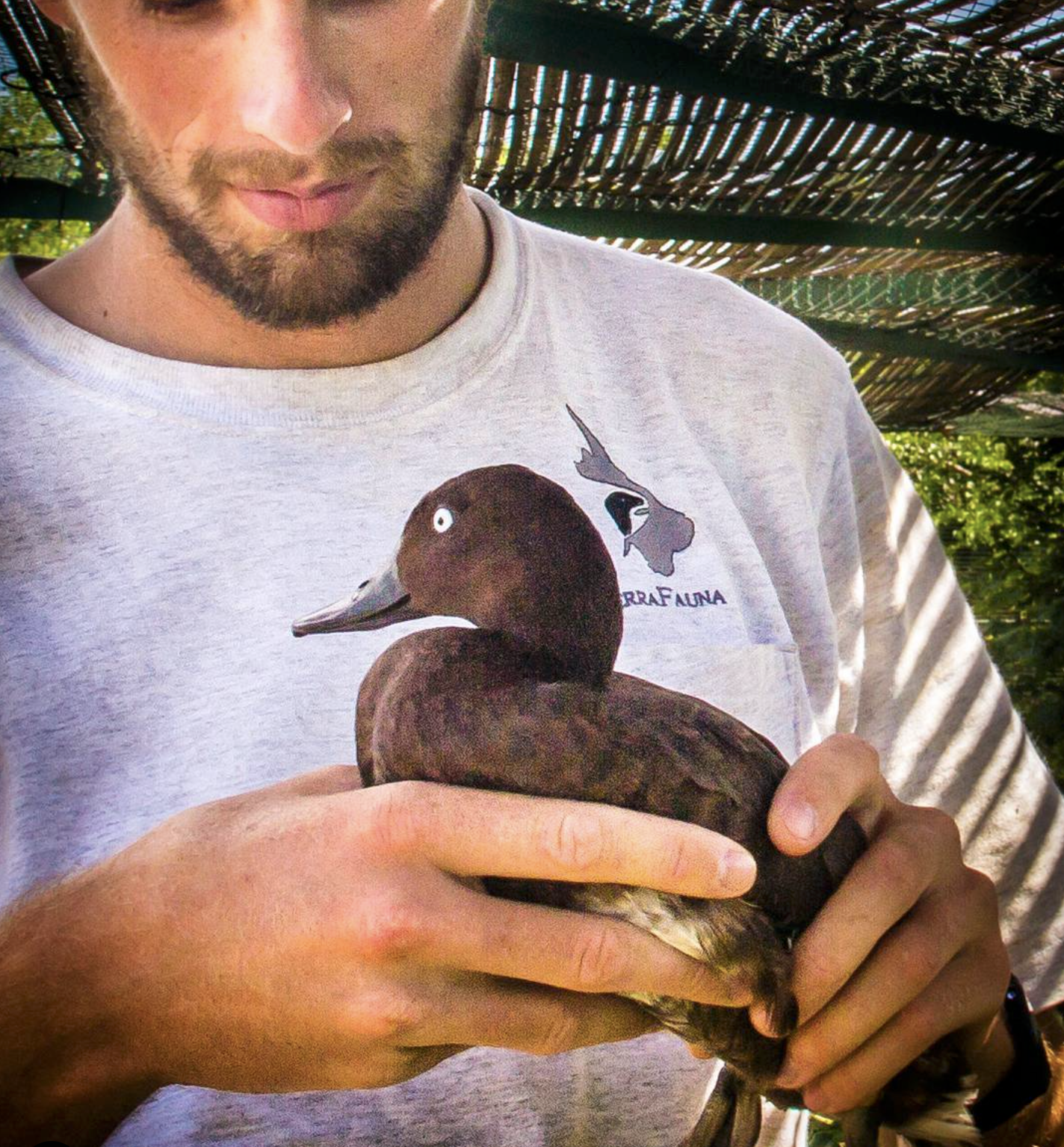
For many people the new year is an opportunity for a fresh start and the potential to create new surroundings. Well if that’s the case then things are going just ducky for the Madagascar pochard in 2019. Considering the long swim the world’s rarest bird has had to get there, we’d say that’s definitely worth celebrating.
After all, it was only a few short years ago that these diving ducks were thought to have gone the way of the Dodo.
For years the Madagascar pochard faced habitat loss as a result of sedimentation, invasive species, pollution, and poor agricultural practices across the country, and in 1991 the last bird sighting had experts believing the creatures had been wiped out permanently.
Then, 15 years later in 2006, biologists from the nonprofit bird conservation group The Peregrine Fund discovered a small paddling of 25 ducks at the remote and heavily forested volcanic Lake Matsaborimena in the north of the country, where they had been forced in order to survive. Experts were immediately asked to come in and assess the situation, which they deemed dire.
They were “only clinging on to existence in a place not really suited to them,” Wildfowl and Wetlands (WWT) head of conservation programs Rob Shaw tells the BBC.
“We realized that although they were having ducklings, all the ducklings were starving when they got to about a month [to] six weeks old,” WWT’s program development advisor Peter Cranswick recalls to the CBC. “So we literally took three clutches, 24 eggs, from the wild, hatched them by the side of the lake, and then drove them to the nearest town that had electricity and water and, having made no preparations, reared them in a hotel bathroom.”
Nine years later and conservationists are chalking up a big win, as 21 of the rare birds were released back into the wild just before the new year. That victorious moment, which came after plenty of “sweat and blood,” according to Cranswick, may be a turning point in the critically endangered species’ future survival.
You can’t blame biologists for patting themselves on the back over the news, or over the fact that they now have roughly 100 birds in captivity with plans to release more. In order to get to that point, WWT, the Durrell Wildlife Conservation Trust, the Peregrine Fund and the Madagascar government collaborated first to find suitable breeding grounds, and then to create a centre where the ducks could thrive.
They settled on Madagascar’s northern Lake Sofia, where the pochards would have access to food but would be far enough away from human interference. Even then the lake conditions needed improvement, so experts worked with local communities to help develop less harmful farming and fishing practices.
Once the lake was ready the team then constructed the world’s first ever floating aviaries, which were converted from Scottish salmon farming cages, to ensure the ducks could acclimatize and wouldn’t fly off in search of wetlands. According to Cranswick it was a months-long process that involved border rigmarole, transportation woes, and lots of creativity.
“We went to the manufacturers and pleaded to make a duck-sized version of [the cages] that would fit on a shallow lake,” he told CBC. “It’s come in kit form, and we’ve had to export it and get it through customs and get it on the back of a tractor and then get it up to this lake that’s literally on the back end of beyond.”
The specific 21 pochards that were released in December were hatched a couple of months earlier, in October, and reared in the pens. Feeding stations and rafts have also been installed across the lake in order to encourage the birds to stay, which they seem to be doing for now.
Of course while seeing these birds back in the wild is a promising start, there’s still a long way to go before they’re considered safe from extinction. Some are hoping the story of their release will spark more conversations over the ongoing wetland conservation efforts in Madagascar, while others are hoping it inspires hope.
“The restoration program at Lake Sofia will encourage others in Madagascar to no longer look at the Island’s wetlands as lost causes,” Hywel Glyn Young, head of birds at the Durrell Wildlife Conservation Trust, tells Smithsonian. “They may once again be centres of biodiversity while continuing to support communities of people who also depend on them.”
